When Christian Dior came to Scotland: 'I was even more struck by the beauty of the country, the castles, and the moors, than I had expected'
Seventy years after Christian Dior’s last fashion show in Scotland, the brand returned under creative director Maria Grazia Chiuri for a celebratory event honouring local craftsmanship, the beauty of the land and the Auld Alliance, explains Kim Parker.
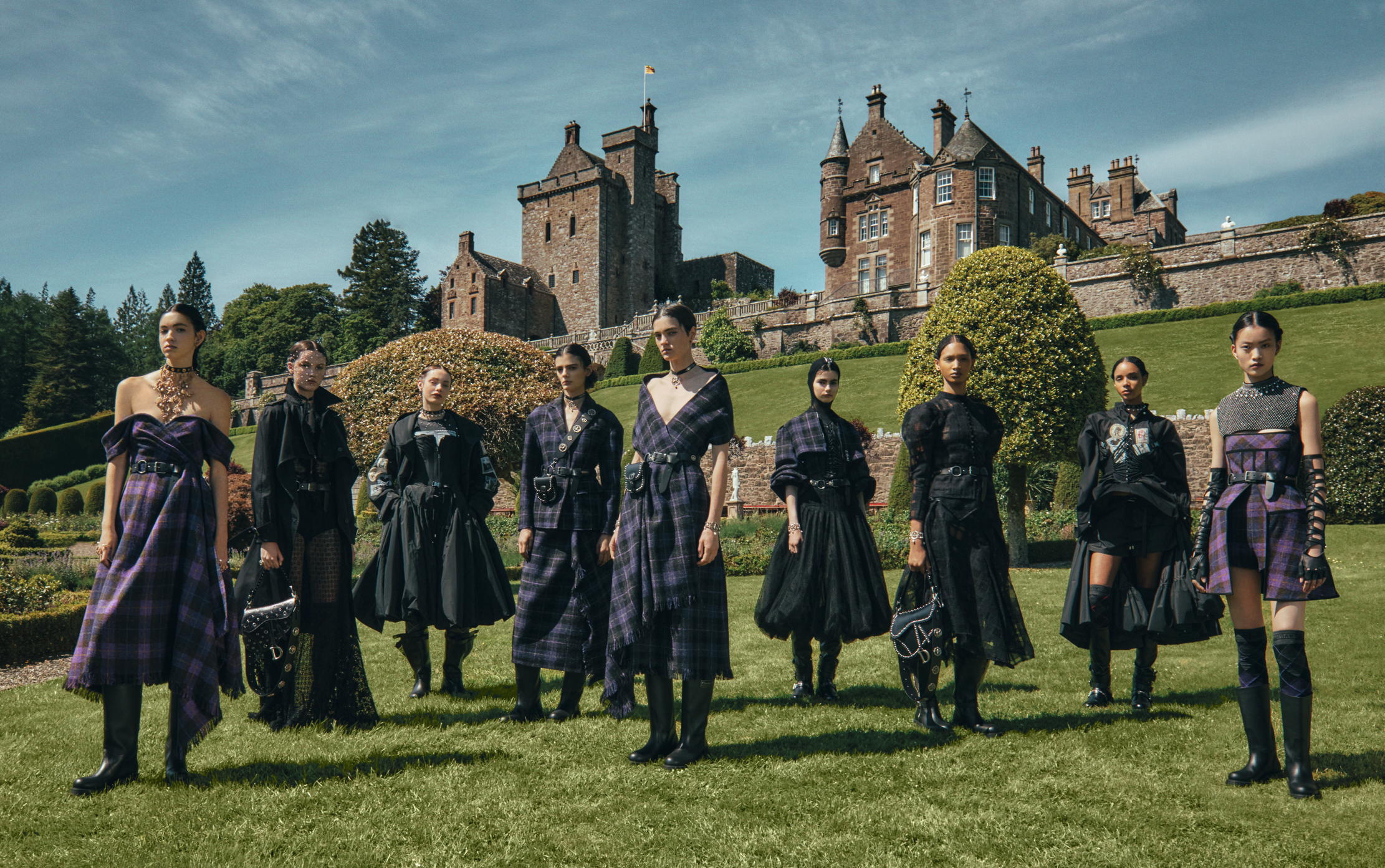

‘I lingered a little in Scotland,’ wrote Christian Dior in his 1956 memoir, Dior by Dior. ‘I had heard so much about its beauty that I had feared to be disappointed — on the contrary, I was even more struck by the beauty of the country, the castles, and the moors, than I had expected.’
The Normandy-born couturier recorded his lasting impressions following two spectacular charity fashion shows he had held in Scotland the previous year — one at Gleneagles Hotel in Perthshire and the other at the Central Hotel in Glasgow. Featuring 172 dresses (many named after Scottish locations, such as Dundee and Edinburgh) and watched by more than 1,000 attendees, including the cream of Scottish Society, Dior’s events were an enormous success, raising £4,000 (more than £88,000 today) for Friends of France, a wartime charity founded in Glasgow. Afterwards, the designer and his guests, such as the ‘delightful’ Duchess of Buccleuch, reeled the night away in the Gleneagles ballroom, enjoying themselves so thoroughly that, as he later recalled, ‘the floor shook and bounced’.
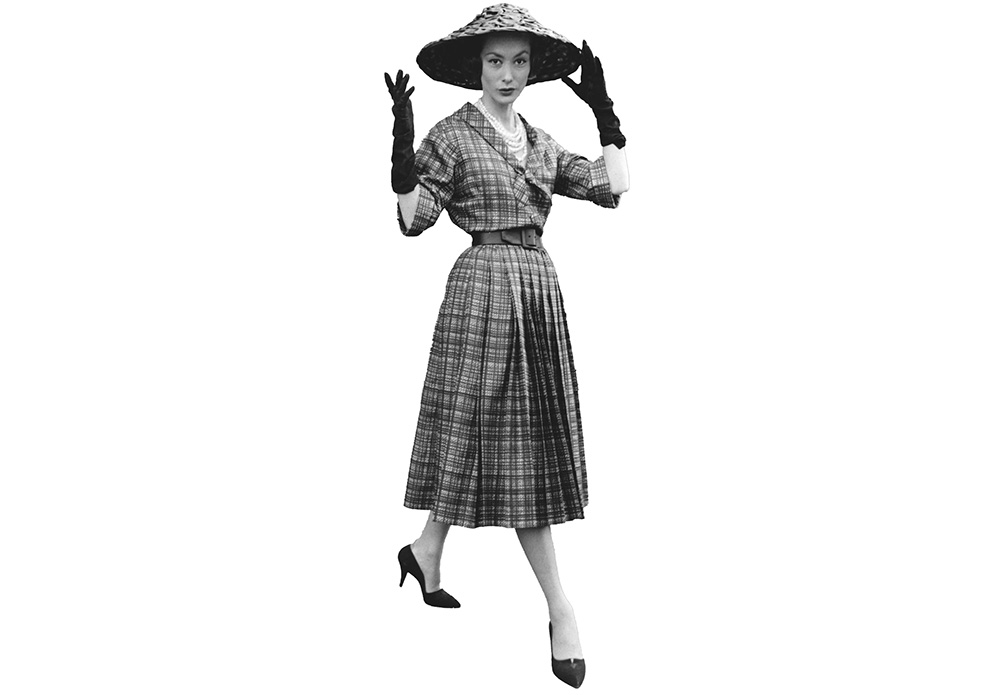
Dior was a lifelong Britophile, having first visited London as a young man to perfect his English in 1926. One of his earliest designs was a dress named Café Anglais, which he created in 1938 for the Parisian couturier Robert Piguet and served as a full-skirted prototype for the voluminous silhouettes he would go on to envisage for his own maison. In 1947, Dior’s debut collection, nicknamed ‘the New Look’, quickly made him a favourite among aristocratic British It-girls of the day, such as Nancy Mitford, Lady Diana Cooper, the Countess of Dudley (who even became an employee) and Princess Margaret, who all revelled in his luxurious, fabric-heavy confections — such as the soft-shouldered jacket and flared skirt of his iconic Bar Suit — after the privations of the Second World War. Indeed, Dior’s designs became so popular in Britain that he founded a London offshoot of his company, CD Models (London), and partnered with renowned British fabric specialists, including the Hawick-based knitwear firm Lyle & Scott and West Cumberland Silk Mill, to create his designs using local materials. Many of these garments went on to form separate collections sold across the Commonwealth.
Dior’s Scottish catwalk presentations were two of a series of high-profile shows he hosted in the UK at grand locations. His initial showcase took place in London’s glamorous Savoy Hotel in spring 1950, to raise funds for a new Museum of Costume (now the Fashion Museum in Bath), with a private viewing held the following day for members of the Royal Family. Bolstered by the admiring reception of the Savoy event, the Duchess of Marlborough helped to organise another Dior show at Blenheim Palace in 1954, this time in aid of the Red Cross, with Princess Margaret as the guest of honour. Dior flew over 100 couture outfits and 14 models from Paris to the Oxfordshire pile, where 1,600 guests each paid five guineas for a ticket. At the end of the presentation, uniformed Red Cross nurses lined up beside the catwalk for an emotional finale. When the designer died only three years later, an entire generation of British textile makers mourned his loss, as did his devoted clientele.
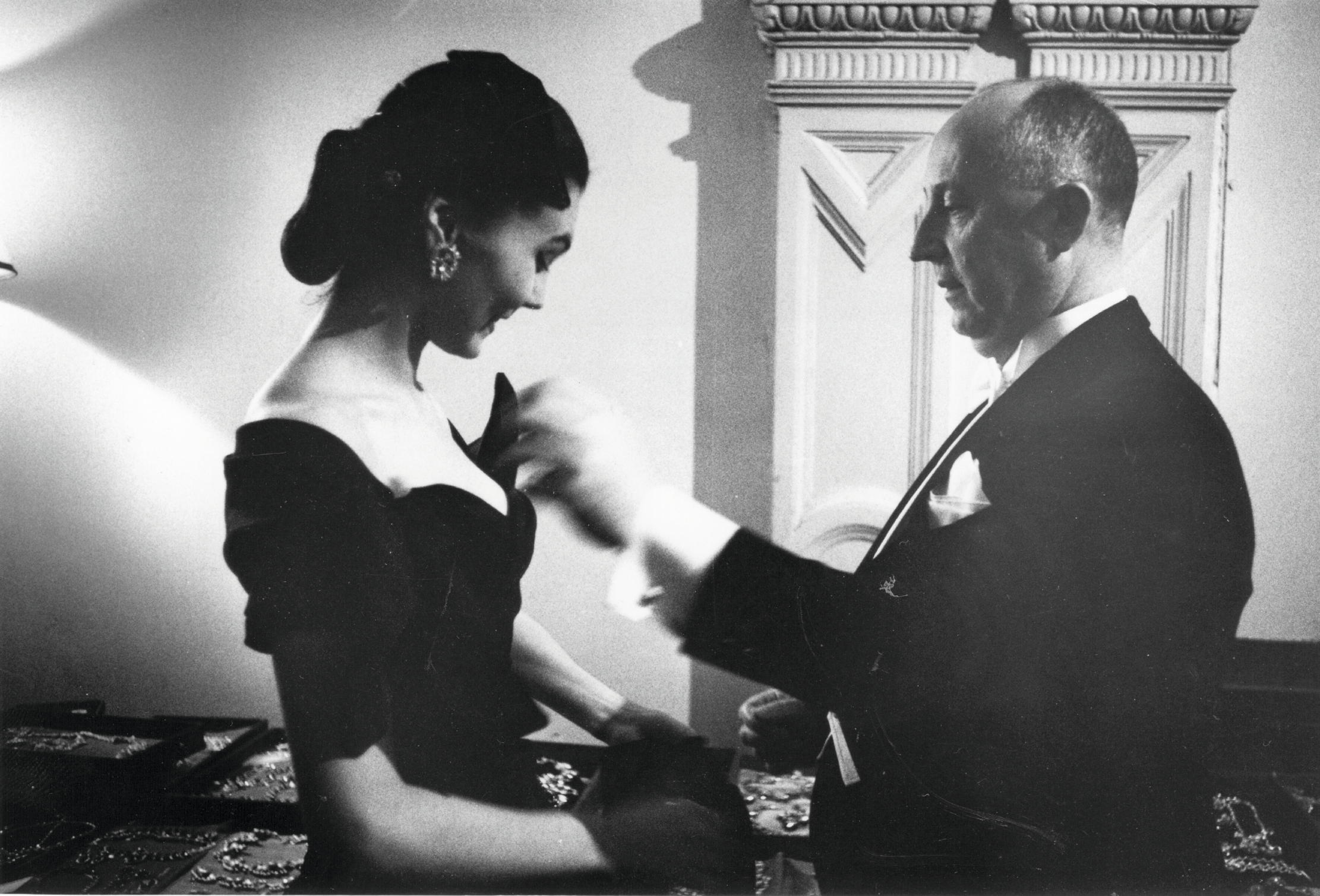
Seven decades after Dior’s Scottish venture, the house’s current creative director, Maria Grazia Chiuri, found herself similarly drawn to the country’s romantic vistas and tempestuous history when imagining Dior’s Cruise 2025 collection. ‘It’s a country I have become familiar with through film and literature, through epic characters and scenarios. I wanted a chance to connect more intimately with this fantasy, to see it come to life,’ she says. ‘I’m also interested in looking for places that have a connection with the House of Dior. It is amazing to retrace these threads of history and to shine a light back on them.’ With the Gleneagles ballroom sadly too small to host a modern coterie of editors, buyers, guests and international celebrities (including Anya Taylor Joy, Lily Collins and Jennifer Lawrence) Ms Chiuri chose nearby Drummond Castle to showcase her latest designs in June.
Once home to the Drummond clan and the Jacobite Earls of Perth, the 17th-century castle is known as ‘the Versailles of Scotland’ for its ornate, terraced gardens, which lent a dramatic backdrop to 89 regal looks influenced by everything from Mary, Queen of Scots (specifically, to a vision of Mary as a political activist evoked by Clare Hunter in her book Embroidering Her Truth: Mary, Queen of Scots and the Language of Power) to the hue of summer heather. A skirl of bagpipes echoed through the grounds as tartan two-pieces paired with wading boots, puff-sleeved dresses in dark Jacobean velvets, cashmere wraps embroidered with the map of Scotland, punkish kilts and armour-like chainmail were paraded down the garden’s gravel pathways that criss-crossed like a saltire flag.
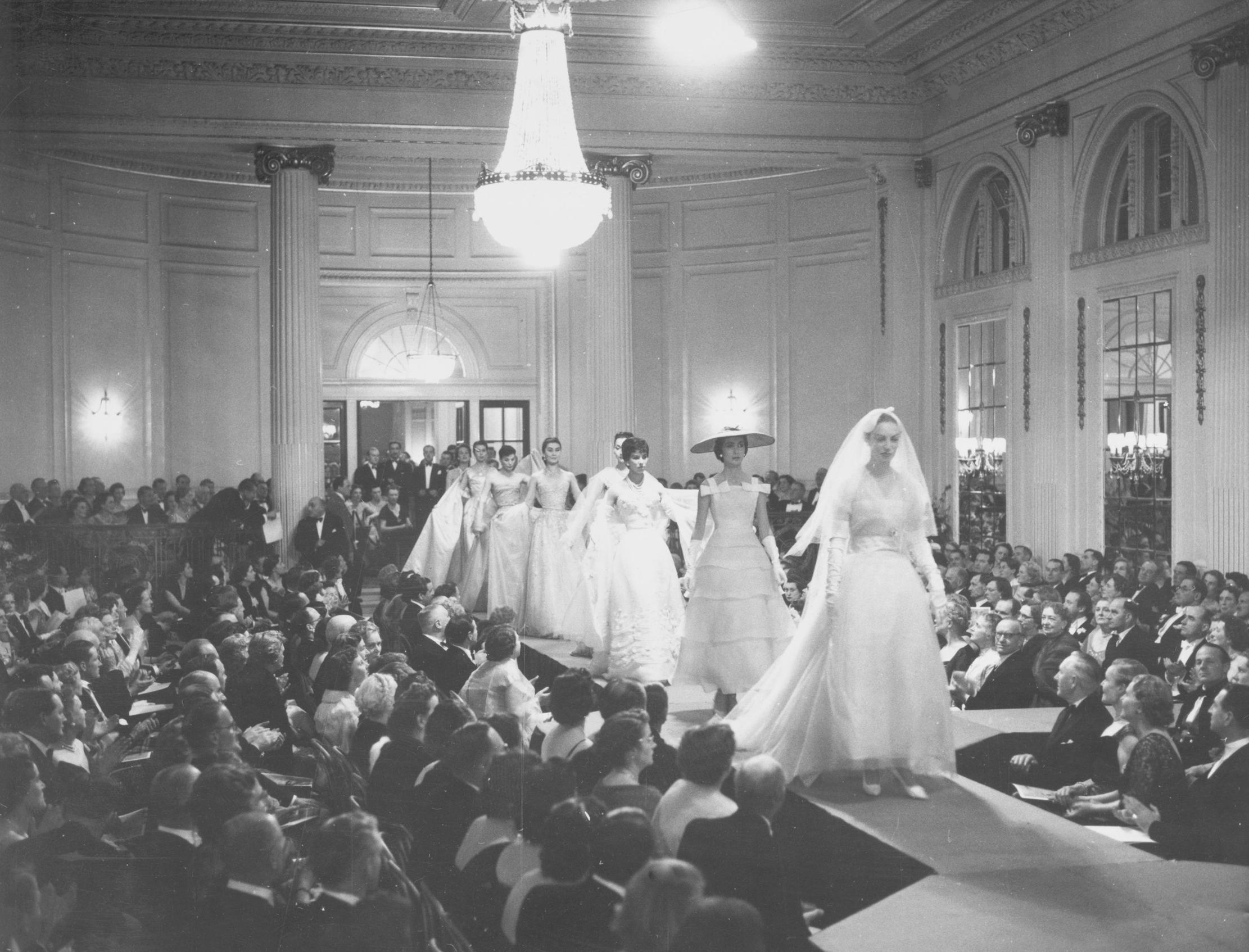
Following in Dior’s footsteps, Ms Chiuri collaborated with local textile makers to craft many of the garments — including Johnstons of Elgin, Harris Tweed Hebrides and bonnet makers Robert Mackie — blending their traditional savoir faire with her contemporary narrative (see box). ‘It was such a thrill to be at the show and to see the three coloured tartans we created with Dior within the first 10 looks,’ says Margaret Ann Mcleod, CEO of Harris Tweed Hebrides, a firm that still produces its vivid plaids by hand in Hebridean island towns. ‘The research and detail that went into every piece was amazing. Having Dior endorse what we do as a small-batch producer speaks volumes of the company’s appreciation for local craftsmanship. We found the whole experience so energising.’
Sign up for the Country Life Newsletter
Exquisite houses, the beauty of Nature, and how to get the most from your life, straight to your inbox.
It’s a sentiment echoed by Jenny Urquhart, chairman of Johnstons of Elgin, which created the Scottish-map knitwear for the show at its traditional weaving mill. ‘It’s always inspiring to collaborate with truly creative people. [They] allow our craftspeople to use their knowledge and expertise in new and exciting ways,’ she explains. ‘Ms Chiuri drew inspiration from parts of our archive that no one had done before. One book in particular, written by my great-grandfather 100 years ago, is an important reference point for the history of Scottish textiles and many of the techniques it describes are still in use today, having been handed down the generations.’
Far from a one-off ‘cosplay’ of Scottish clothing, argue Dior’s collaborators, the Cruise 2025 collection, released in November, has created a lasting legacy of work for local businesses — much as Dior him-self did during his tenure — and elevated their standing in what is an increasingly competitive luxury market.
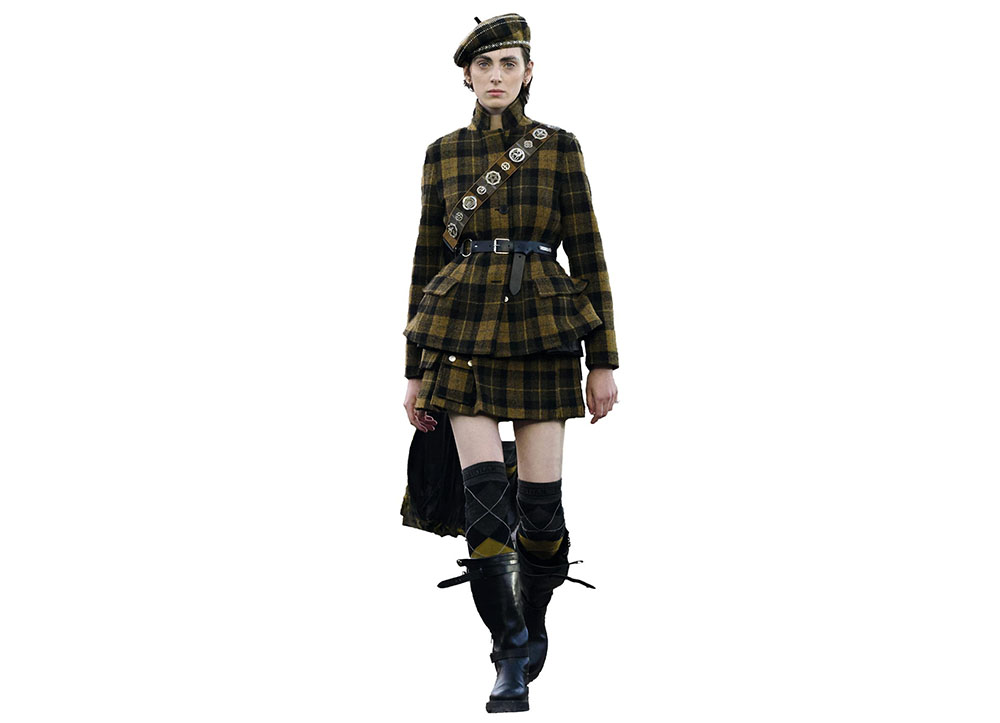
‘For generations, our purpose has been in protecting and developing rare manufacturing skills. To have Ms Chiuri and her team select Scottish makers for the show is not only a reflection of the quality and beauty of our work, but an enormous endorsement and support for Scottish textile manufacturing,’ comments Ms Urquhart. ‘[She brought] the world to Scotland and we could not be more proud.’
Fabrics of time: the makers behind Dior Cruise 2025
Le Kilt
Launched in 2014 by Samantha McCoach, whose grandmother was a kilt maker, Le Kilt’s sophisticated takes on the traditional garment are designed to signify contemporary Scottish culture. ‘There are elements of punk and rebellion in the design that represent the true subversive nature of the kilt,’ says Ms McCoach of the pieces she helped create for Dior, some of which were overlaid with images of the 1955 Gleneagles show. ‘For me, [it also] symbolises legacy, family and tradition’
Robert Mackie
Based in East Ayrshire, Robert Mackie has been making ceremonial bonnets for Scottish regiments and pipe and drum bands since 1845. For Dior Cruise 2025, it embellished a classic Balmoral-style bonnet, complete with pom-pom and dice pattern, with Christian Dior’s signature embroidery

ESK Cashmere
A family-owned business located on the shore of the River Annan in south-west Scotland, ESK works with cashmere and Shetland yarns to craft modern variations of characteristic countryside stitches and patterns, such as Fair Isle
Harris Tweed Hebrides
Harris Tweed Hebrides draws on centuries-old customs of hand-weaving tweed cloth with a network of island-based artisans in the Outer Hebrides. Using a blend of British-farmed Cheviot wool allows the company to deliver a lasting vibrancy and depth of colour that is unavailable elsewhere
Johnstons of Elgin
Founded in the 18th century, Johnstons still operates as a vertically integrated weaving mill in Hawick in the Borders, transforming raw woollen fibres into ready-to-wear garments, including estate tweeds and luxurious cashmere accessories
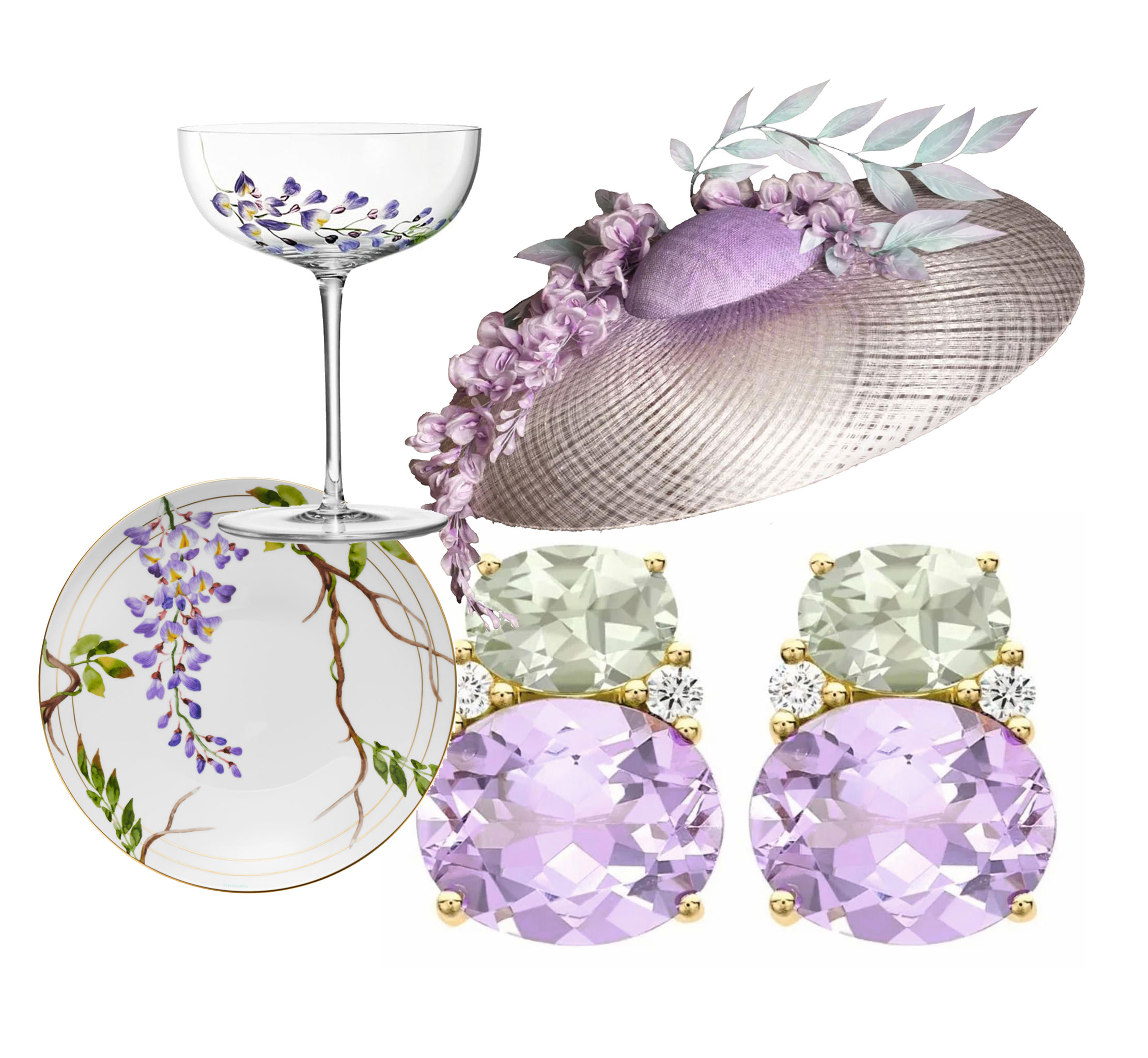
Wisteria hysteria: Nine beautiful objects that celebrate the most beautiful bloom of the season
Embrace the bountiful floral offerings this month with fashion and lifestyle accessories to match, says Hetty Lintell.
Country Life is unlike any other magazine: the only glossy weekly on the newsstand and the only magazine that has been guest-edited by HRH The King not once, but twice. It is a celebration of modern rural life and all its diverse joys and pleasures — that was first published in Queen Victoria's Diamond Jubilee year. Our eclectic mixture of witty and informative content — from the most up-to-date property news and commentary and a coveted glimpse inside some of the UK's best houses and gardens, to gardening, the arts and interior design, written by experts in their field — still cannot be found in print or online, anywhere else.

